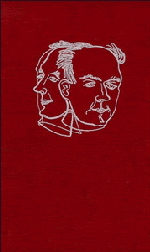Book contents
- Frontmatter
- Contents
- NEW MUSICAL RESOURCES
- PART I TONE COMBINATIONS
- PART II RHYTHM
- 1 Time
- 2 Metre
- 3 Dynamics
- 4 Form
- 5 Metre and Time Combinations
- 6 Tempo
- 7 Scales of Rhythm
- PART III CHORD-FORMATION
- DEFINITIONS OF TERMS
- A NOTE ON THE TYPE IN WHICH THIS BOOK IS SET
- Notes on the text
- Henry Cowell's “New Musical Resources”
- Index
2 - Metre
from PART II - RHYTHM
Published online by Cambridge University Press: 05 June 2015
- Frontmatter
- Contents
- NEW MUSICAL RESOURCES
- PART I TONE COMBINATIONS
- PART II RHYTHM
- 1 Time
- 2 Metre
- 3 Dynamics
- 4 Form
- 5 Metre and Time Combinations
- 6 Tempo
- 7 Scales of Rhythm
- PART III CHORD-FORMATION
- DEFINITIONS OF TERMS
- A NOTE ON THE TYPE IN WHICH THIS BOOK IS SET
- Notes on the text
- Henry Cowell's “New Musical Resources”
- Index
Summary
The next element of musical rhythm that calls for consideration is metre, the result of rhythmically regular accent. Musical time, as we have seen, assumes a certain unit as a base, and it has been convenient to use the simplest, a single whole note. Variation is effected by the different systems of fractional subdivisions, such as three third-notes, five fifth-notes, etc. Musical metre, on the other hand, assumes a succession of time-units, usually quarter- or eighth-notes, and introduces variety by accenting certain of these notes at fixed intervals. Thus, the distinction between ¾ “time,” “time,” “time,” etc., is a matter of musical metre. If desired, new metres could be made by using the new kinds of notes suggested in the time-scheme, ⅔, ⅗, etc. The purely metrical consideration, that of accent, would not be changed by so doing, but such new metres are often invaluable in combining metre and time-ratios.
It is here proposed to apply the principle of the series of partials to musical metre, as it has already been applied to musical time. If it be found that certain metrical combinations have a mathematical correspondence to certain tonal combinations, it will be found possible to combine metres by mathematical ratios into metrical harmonies, just as tones are combined into tonal harmonies. In order to avoid the complications of combinations of time and metre, which will be considered later, in the subject of metre alone a standard unit of time will be taken on which all the metres here treated of will be based. This unit, on account of its universal metrical use and the fact that it is a close approach to a mean between a slow and a fast note, will be a quarter-note.
Just as in the matter of tone we start with a simple fundamental tone like the C of sixteen vibrations to the second, so we base our metrical system on a simple base.
- Type
- Chapter
- Information
- New Musical Resources , pp. 66 - 81Publisher: Cambridge University PressPrint publication year: 1996

